Qinghong Yang
AltCLIP: Altering the Language Encoder in CLIP for Extended Language Capabilities
Nov 21, 2022
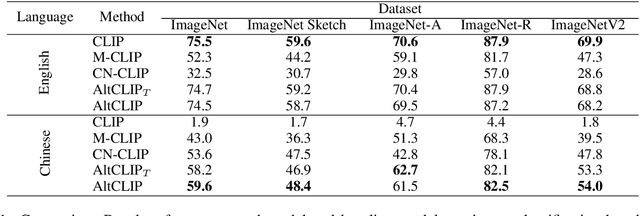
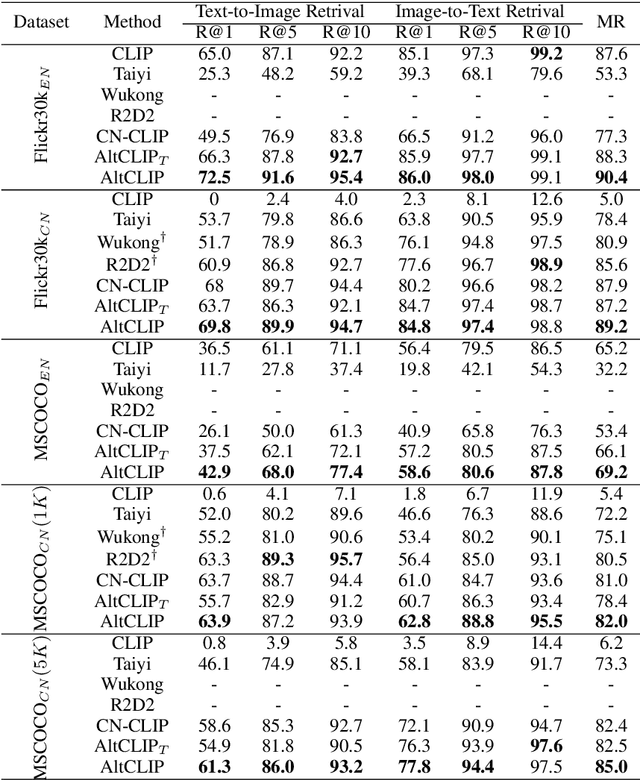
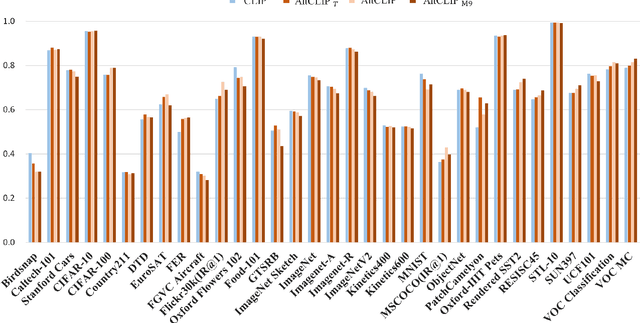
Abstract:In this work, we present a conceptually simple and effective method to train a strong bilingual/multilingual multimodal representation model. Starting from the pre-trained multimodal representation model CLIP released by OpenAI, we altered its text encoder with a pre-trained multilingual text encoder XLM-R, and aligned both languages and image representations by a two-stage training schema consisting of teacher learning and contrastive learning. We validate our method through evaluations of a wide range of tasks. We set new state-of-the-art performances on a bunch of tasks including ImageNet-CN, Flicker30k-CN, COCO-CN and XTD. Further, we obtain very close performances with CLIP on almost all tasks, suggesting that one can simply alter the text encoder in CLIP for extended capabilities such as multilingual understanding. Our models and code are available at https://github.com/FlagAI-Open/FlagAI.
Phonemic Adversarial Attack against Audio Recognition in Real World
Nov 19, 2022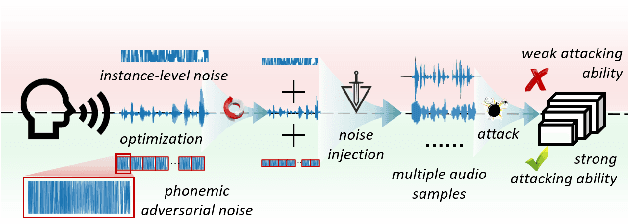
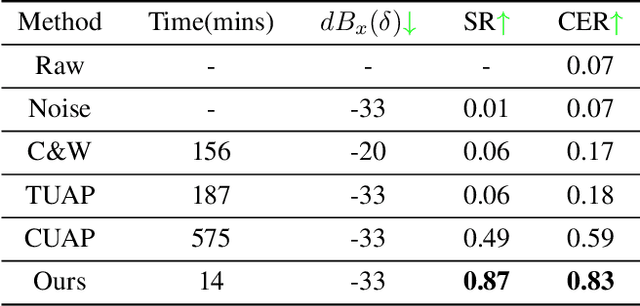
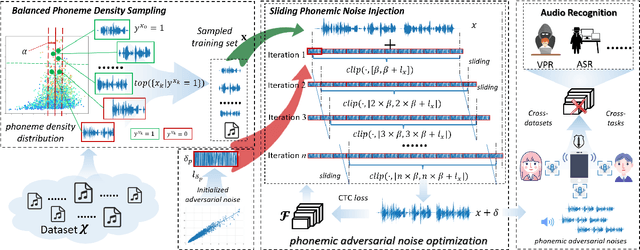

Abstract:Recently, adversarial attacks for audio recognition have attracted much attention. However, most of the existing studies mainly rely on the coarse-grain audio features at the instance level to generate adversarial noises, which leads to expensive generation time costs and weak universal attacking ability. Motivated by the observations that all audio speech consists of fundamental phonemes, this paper proposes a phonemic adversarial tack (PAT) paradigm, which attacks the fine-grain audio features at the phoneme level commonly shared across audio instances, to generate phonemic adversarial noises, enjoying the more general attacking ability with fast generation speed. Specifically, for accelerating the generation, a phoneme density balanced sampling strategy is introduced to sample quantity less but phonemic features abundant audio instances as the training data via estimating the phoneme density, which substantially alleviates the heavy dependency on the large training dataset. Moreover, for promoting universal attacking ability, the phonemic noise is optimized in an asynchronous way with a sliding window, which enhances the phoneme diversity and thus well captures the critical fundamental phonemic patterns. By conducting extensive experiments, we comprehensively investigate the proposed PAT framework and demonstrate that it outperforms the SOTA baselines by large margins (i.e., at least 11X speed up and 78% attacking ability improvement).
Exploiting Global and Local Hierarchies for Hierarchical Text Classification
May 05, 2022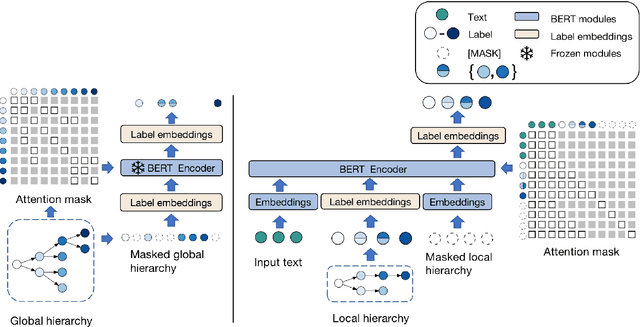

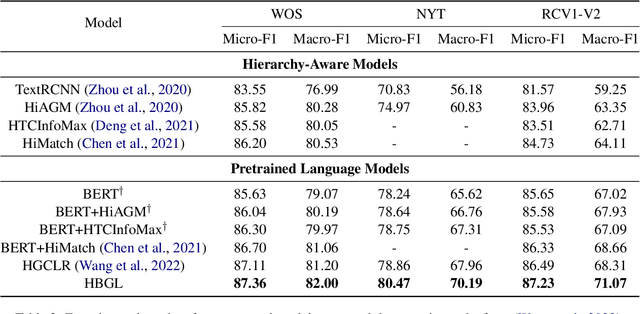

Abstract:Hierarchical text classification aims to leverage label hierarchy in multi-label text classification. Existing methods encode label hierarchy in a global view, where label hierarchy is treated as the static hierarchical structure containing all labels. Since global hierarchy is static and irrelevant to text samples, it makes these methods hard to exploit hierarchical information. Contrary to global hierarchy, local hierarchy as the structured target labels hierarchy corresponding to each text sample is dynamic and relevant to text samples, which is ignored in previous methods. To exploit global and local hierarchies, we propose Hierarchy-guided BERT with Global and Local hierarchies (HBGL), which utilizes the large-scale parameters and prior language knowledge of BERT to model both global and local hierarchies. Moreover, HBGL avoids the intentional fusion of semantic and hierarchical modules by directly modeling semantic and hierarchical information with BERT. Compared with the state-of-the-art method HGCLR, our method achieves significant improvement on three benchmark datasets.
An alarm prediction framework for financial IT system using hybrid machine learning methods
Jul 30, 2019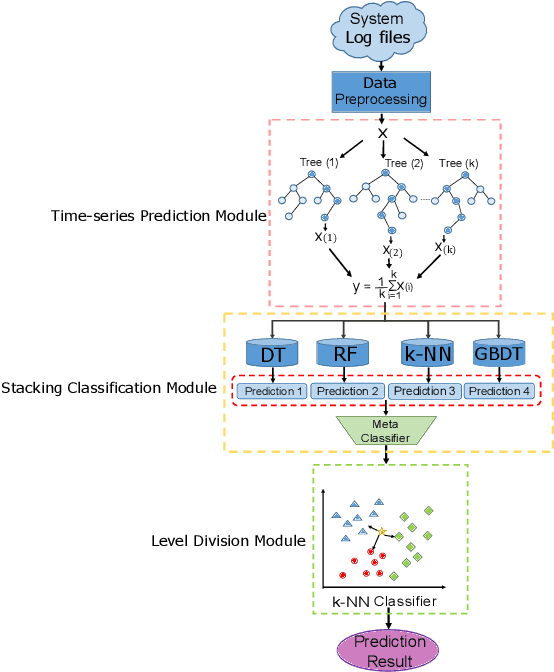
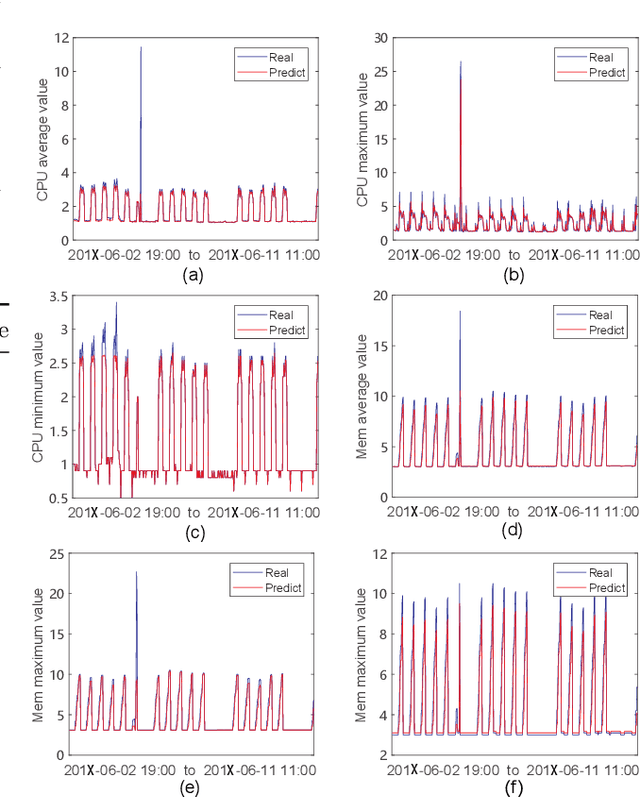
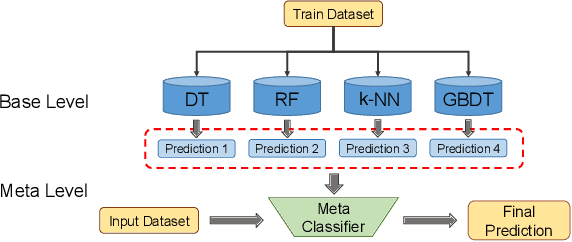
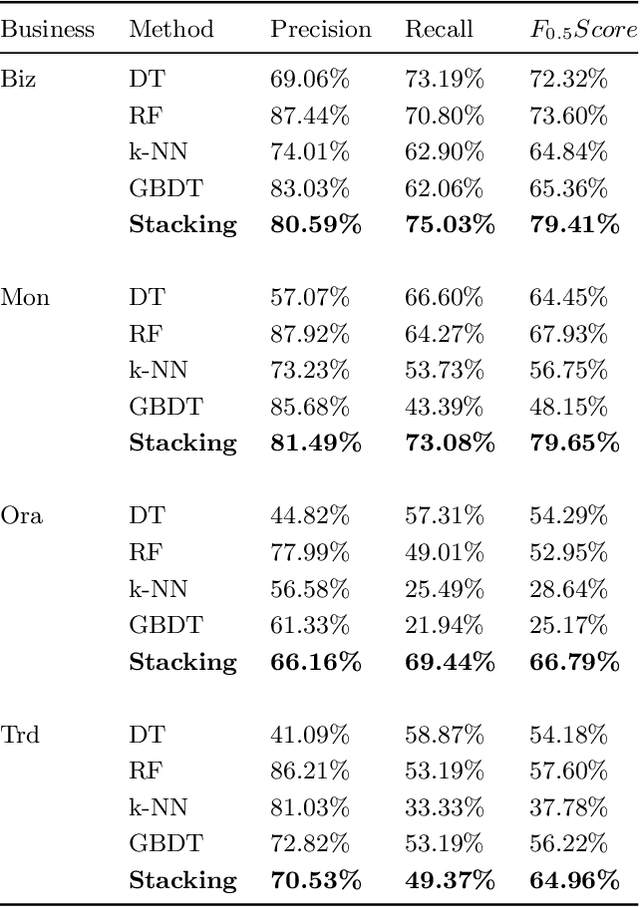
Abstract:Informatization grows rapidly in all walks of life, going with the enhancement of dependence on IT systems. It is of vital importance to ensure the safe and stable running of the system especially in the field of finance. This paper puts forward a machine learning-based framework for predicting the occurrence of the alarm cases of a financial IT system. We extracted the features from the system logs then build three sub modules which are time-series prediction module, alarm classification module and level division module that composing the whole work flow. We take multiple methods to deal with the problems facing the obstacles in each module. We built the time-series prediction model in terms of time and accuracy performance. To gain higher performance, we introduced ensemble learning methods in designing alarm classifier and alleviated the class-imbalance problem in alarm level division process. The evaluation results from all sides show that our framework could be exploited for real time applications with the veracity and reliability ensured.
 Add to Chrome
Add to Chrome Add to Firefox
Add to Firefox Add to Edge
Add to Edge